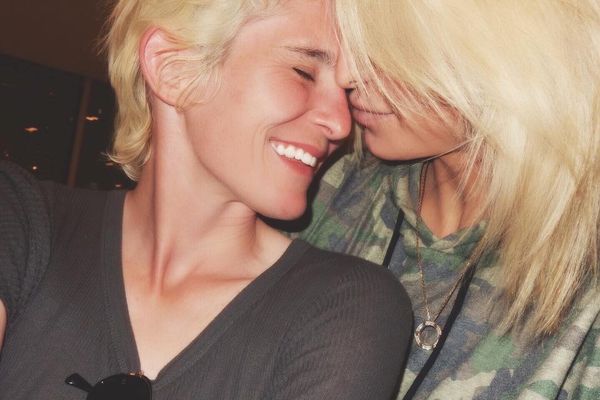For 20-somethings, there’s one topic that seems ever-present: dating. Whether you do it or you don’t, you’re bound to hear about it. Dating as a straight, cisgender person in an age where the dating scene is changing so rapidly is already difficult; when you add gender and sexuality curveballs to the mix, it can be downright exhausting.
Right off the bat, we have to rid ourselves of the assumption that someone’s gender indicates their sexual and/or romantic attraction. Not all transgender or non-binary people are bisexual or pansexual. They can have preferences to the gender of their partners, just like anyone else. This creates a messy area, where language seems to fail us. A woman attracted to exclusively women is a lesbian; what is a non-binary person attracted exclusively to women (or men) called? Can a person who identifies as straight, or as gay or lesbian, be attracted to a non-binary person without invalidating their identity (on either side)? These questions are too large for one conversation to ever answer (if they can be answered), and right now I’m not trying to. I’m painting a small piece of the bigger picture – this is uncharted territory.
On the same note, “What do I call you?” is often the first question a new partner will ask, and the possible answers are endless. Some non-binary people use boyfriend or girlfriend, since it’s easily recognizable. Some use the generic “partner” (with the bonus of sounding like a "Brokeback Mountain" rip-off).
Others make up words, and this is one of those special moments of sweetness and vulnerability that is unique to non-binary dating. I’ve heard people use “datemate, “datefriend,” and “squish.” Some people use special nicknames, without any label. Exploring language here, like with the romantic and sexual labels before, is messy, but just because something is messy doesn’t mean it’s not important. We should make a mess of language – it’s all arbitrary, after all. We can rebuild it.
So you’ve labeled (or unlabeled) yourself. Now you need to figure out where to meet people. This task is the hardest part for anyone, but as a non-binary person, you have to weigh several factors. Most heavy is the presumption that transgender people are trying to “trick” people. As someone who presents as female and is often treated as a cisgender woman, I often worry that I am “tricking” people into being attracted to me when I don’t immediately reveal my gender. Too often, I have to give Trans 101 to a stranger – or worse, to someone who I’ve known for a while and finally come out to. It’s scary, which doesn’t usually get one in the mood for romance, and it’s alienating to feel like you’re hiding something.
So I’ve tried online dating. The Internet is known for its inclusivity -- Facebook even allows you to fill in your gender and pronouns now. OKCupid does much the same, letting you pick your pronouns and gender. Then, it asks if you want to be “included in search results for men or for women?” This is the online dating version of, “What are you really?”
Once you’re in, men will treat you with the same misogyny as any women, but throw in a hefty dose of transphobia to go along with it. I have been purposely misgendered by multiple men on dating websites – to the point that I filter them out. I’m attracted to men, but I simply will not deal with being called a “special snowflake” by a man who includes “oxygen” as one of his six things he can’t live without.
So where do non-binary people find partners?, you are hypothetically asking, now that I’ve shot down so much. Short answer: when you find out, let me know. Long answer: in the same places as everyone else. Though the process is more complicated then it might be for binary people, it works in much the same way. Sometimes, a friend sets you up, and they explain the “gender thing” beforehand. Other times, you meet someone in an LGBT+ space first, and you’re already out there, so you don’t have to explain anything.
The last time I dated someone, I waited a few weeks to tell her. I wanted to be sure that I had some investment and it might go somewhere before I went through the explanation. I told her I understood if she wasn’t comfortable dating someone who was non-binary, and I wouldn’t hold it against her. I was surprised to find that she not only already knew what non-binary genders are, she was totally cool with it too. While nothing major came of it, it was uplifting to know that acceptance was so much more possible than I ever imagined. When you’re marked as “other” by society, it can be hard to feel like you’re worthy of love. I had half broken up with myself by the time I came out to this girl, and there was no reason other than I genuinely didn’t think she’d want to be with someone like me. I was wrong, and I try to internalize that message to this day.
The world of dating for non-binary people is treacherous. Along the way, things can go wrong in more ways than they can go right – but that’s true for anyone. It’s hard, but it doesn’t mean you don’t try. Dating can be a terrifying prospect, but at the end of the day, it’s about loving each other and ourselves better. It’s about connecting with someone else, and while it can be tempting to gloss over or hide the hard parts of ourselves, those are the parts that make for the most valuable and vulnerable relationships – the kinds we crave and deserve.


















